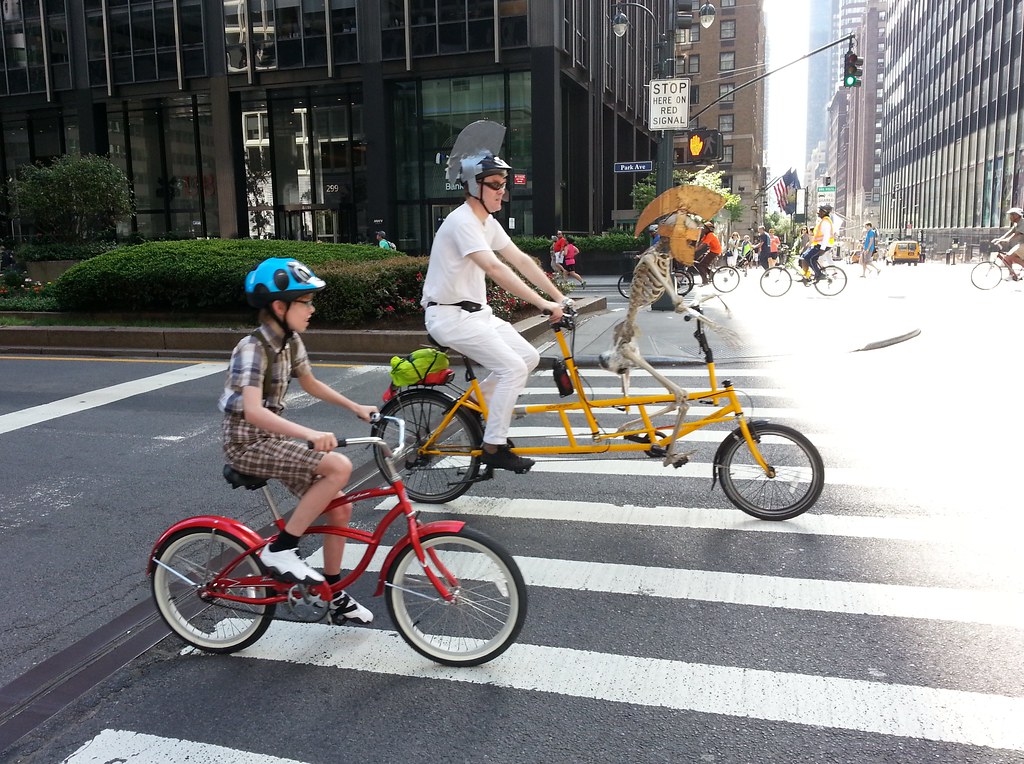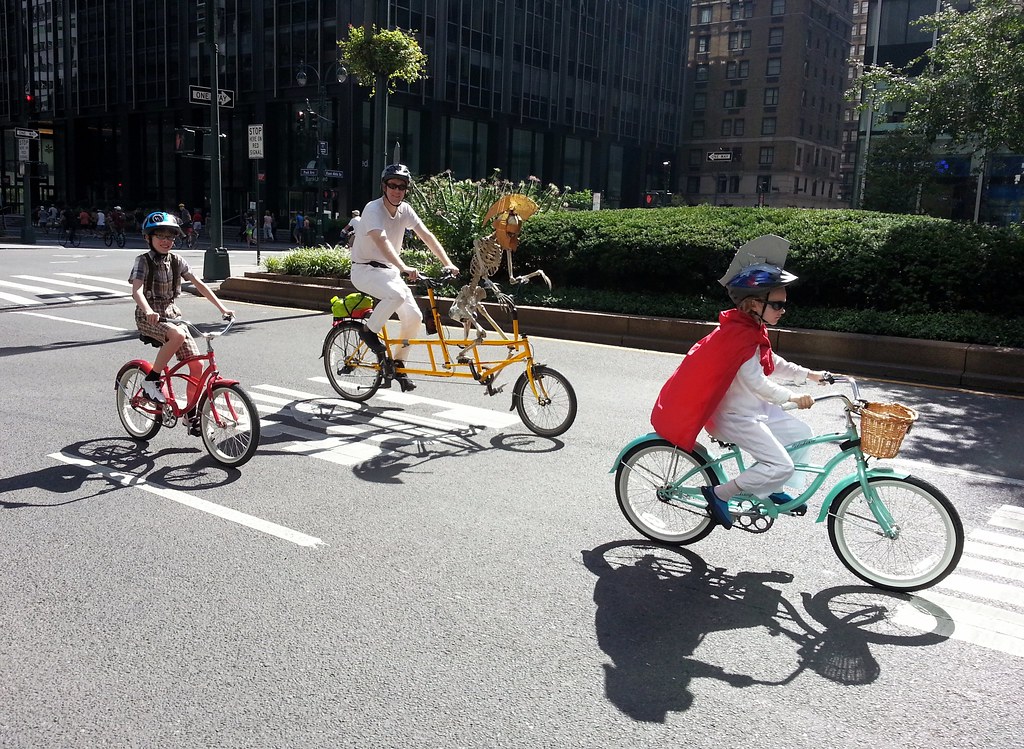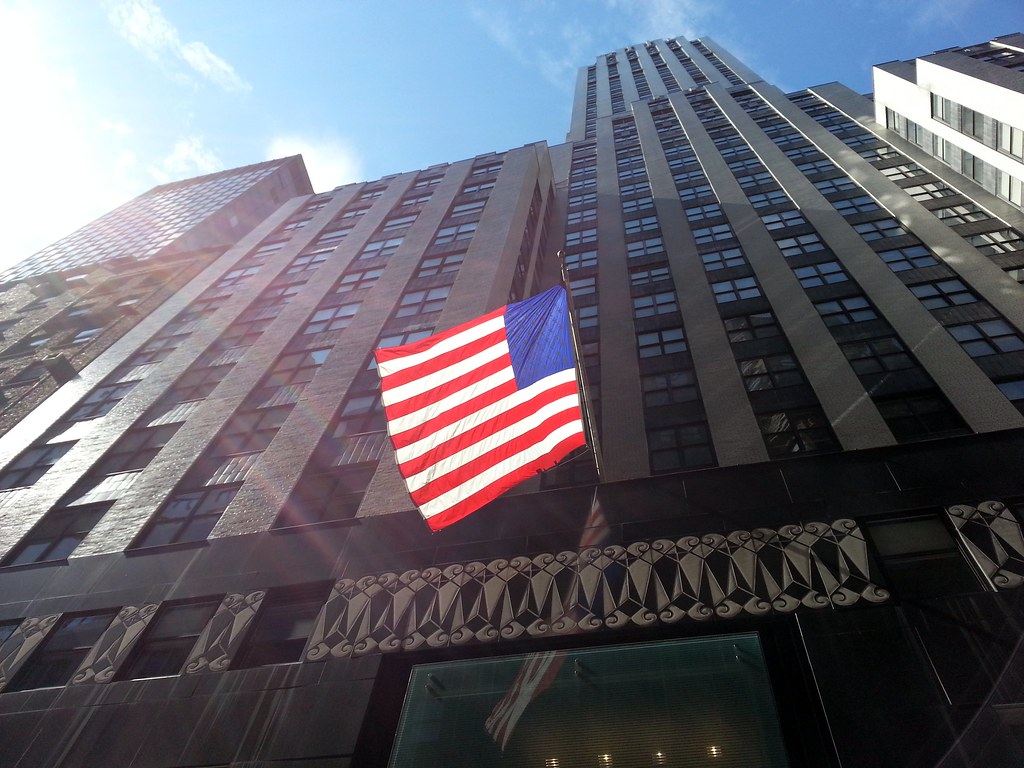
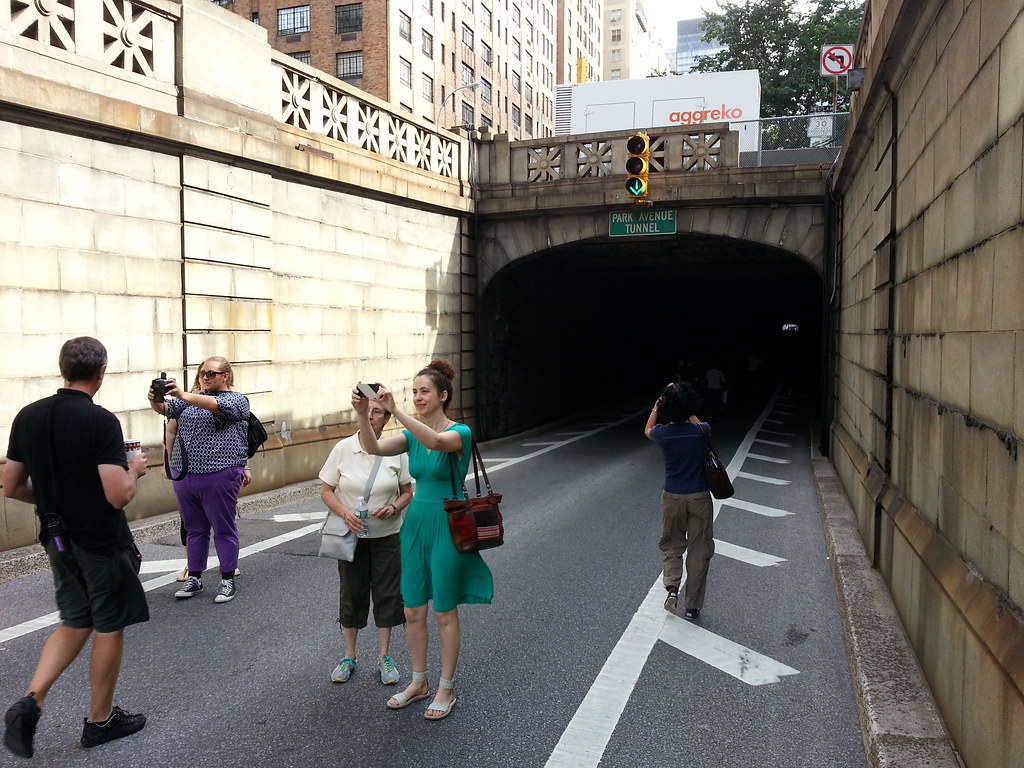
This 150-some-year-old railroad-turned-automobile tunnel beneath Park Avenue is normally off limits to pedestrians, but the city DOT has decided to open it to foot traffic as part of this year's Summer Streets, "an annual celebration of New York City’s most valuable public space—our streets. On three consecutive Saturdays in the summer, nearly seven miles of NYC’s streets are opened for people to play, walk, bike, and breathe." It's the first time the public has been allowed to walk through the tunnel since the 1930s (or ever, depending on your source).
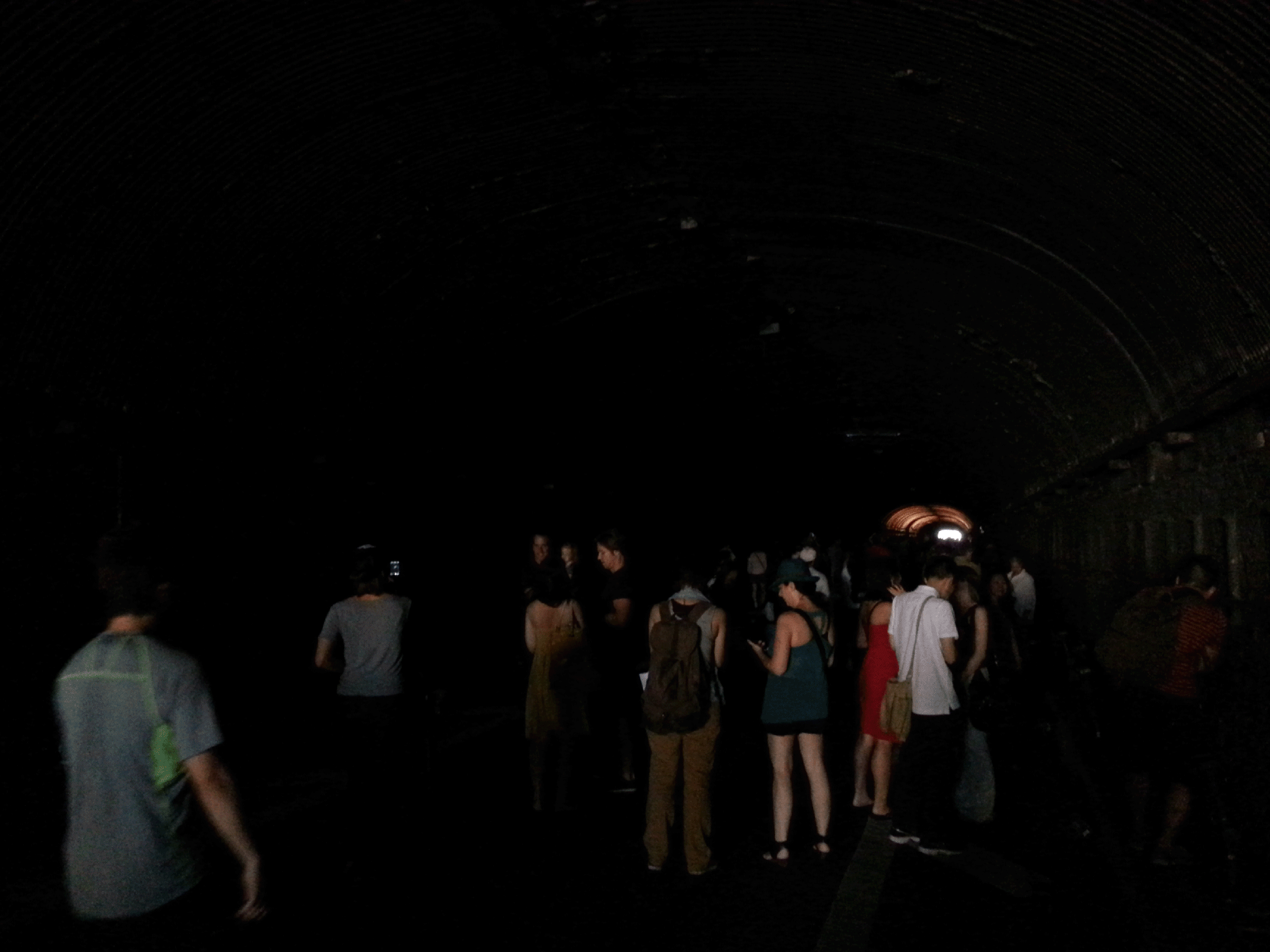
In addition to being open to pedestrians, the Park Avenue Tunnel has been transformed into Rafael Lozano-Hemmer's Voice Tunnel during this year's Summer Streets. You can watch a short video about the installation here.

The Park Avenue Viaduct (a.k.a. "Overhead Roadways around Grand Central Terminal") — another cool piece of infrastructure only accessible to pedestrians during Summer Streets
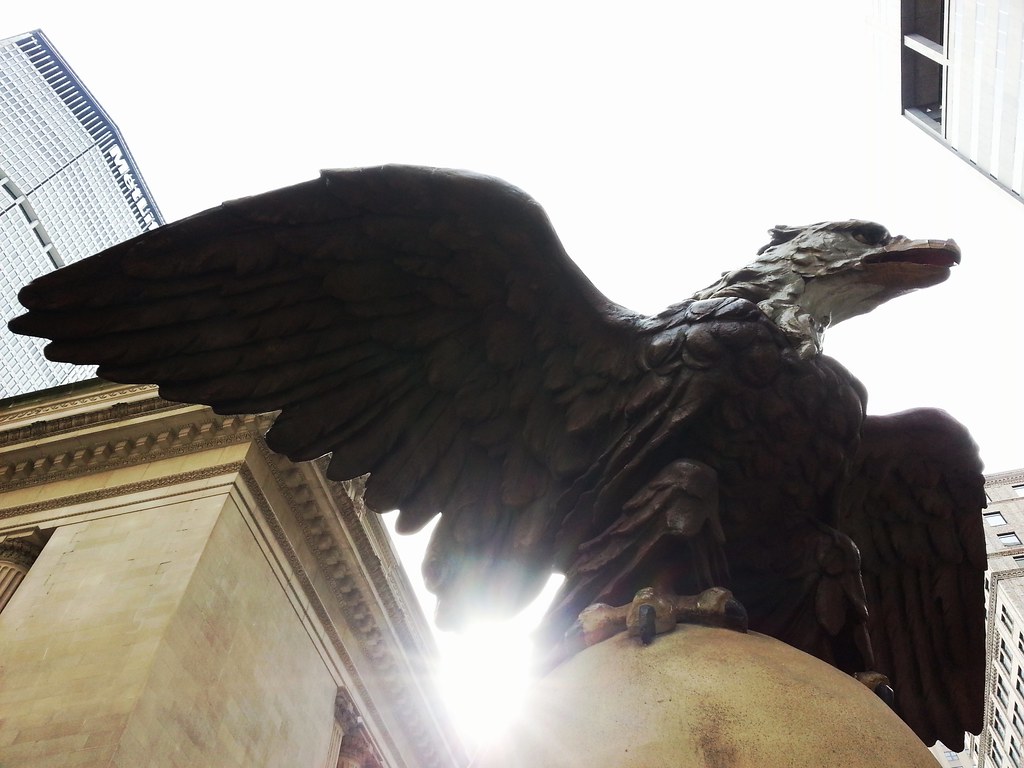
This big cast-iron eagle is one of perhaps ten or twelve similar sculptures that once stood atop the old Grand Central Station. They were installed during the turn-of-the-20th-century reconstruction of the station, which had previously been known as Grand Central Depot (and which featured a breathtaking iron and glass arched train shed). When the station was demolished and replaced by the current Grand Central Terminal in the early 20th century, the birds took flight, ending up in the hands of several different people and institutions. Their whereabouts are now mostly known, thanks to the efforts of a couple of dedicated eagle hunters.
The eagle pictured above landed at a Capuchin seminary in Garrison, New York, where it remained until 2001, when the friars donated it to the MTA. It has since returned to Grand Central and can now be seen perched on the building's southwest corner, making it the second eagle to have found its way back home after the diaspora. One of the aforementioned eagle hunters was not happy with this choice of location, however, telling the NY Times that placing the bird in such a prominent spot would be a "travesty" and "would aversely affect the view of Grand Central that Jacqueline Kennedy Onassis fought so hard to preserve."
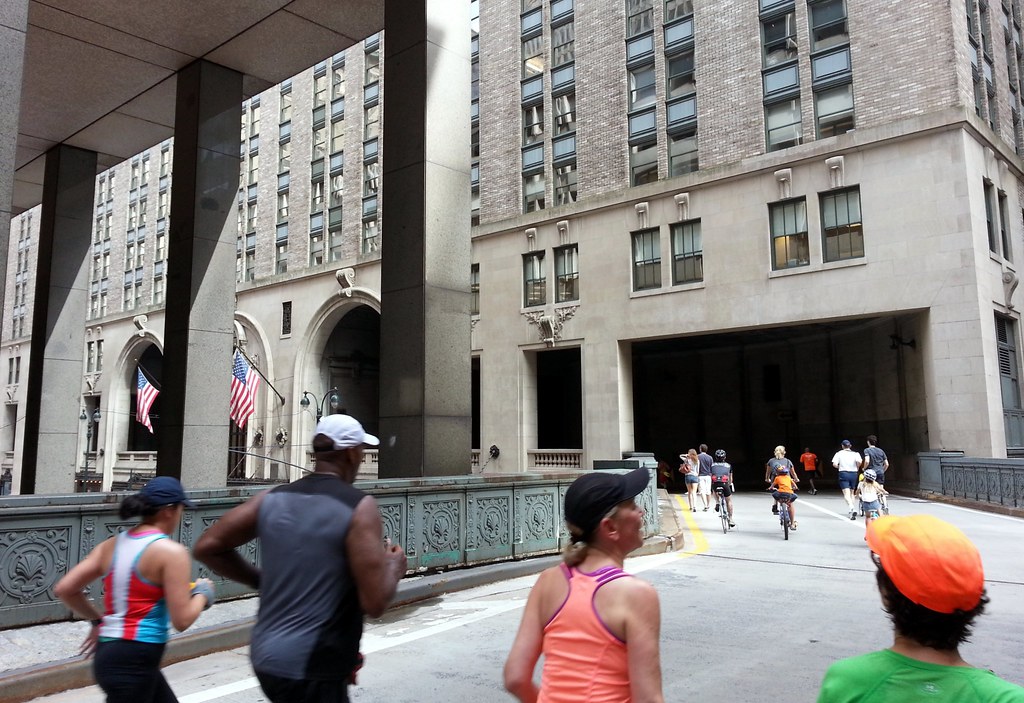
Heading north, the eastern branch of the Park Avenue Viaduct passes through the bottom of the Helmsley Building, descending to street level and rejoining the western (southbound) lanes of Park Avenue at 46th Street.

Inside the Helmsley Building on the eastern (northbound) leg of the Park Avenue Viaduct, almost back at street level
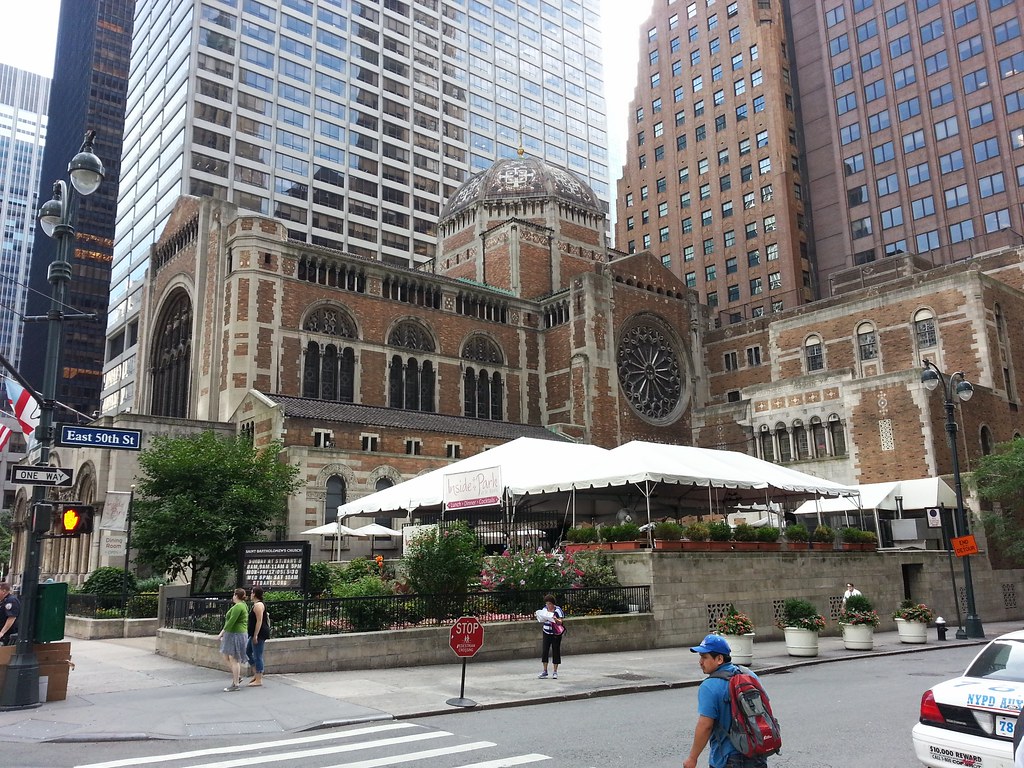
Back in the 1980s, the rector of St. Bart's led a divisive and controversial attempt to secure the church's finances with the construction of a towering glass skyscraper on the site of its community house (the brick and stone building extending from the right side of the church). His plan was strongly opposed not only by preservationists (including, once again, Jackie Kennedy Onassis), but by many parishioners as well.
When the skyscraper scheme met its official demise in 1991 at the hands of the Supreme Court, the church seemed to be on its last legs, with dwindling attendance and a shrinking endowment. But a new rector took the reins in 1994, introducing a "theology of radical welcome" and gradually bringing people back to the church. By the time he retired early last year, the congregation had grown from 150 to almost 3,400. (He also had his own ideas for making some money off the community house: he opened a restaurant inside it, with a warm-weather outdoor dining area, visible above, on the church's terrace.)
Factlet of the day: St. Bart's has the largest organ in NYC!
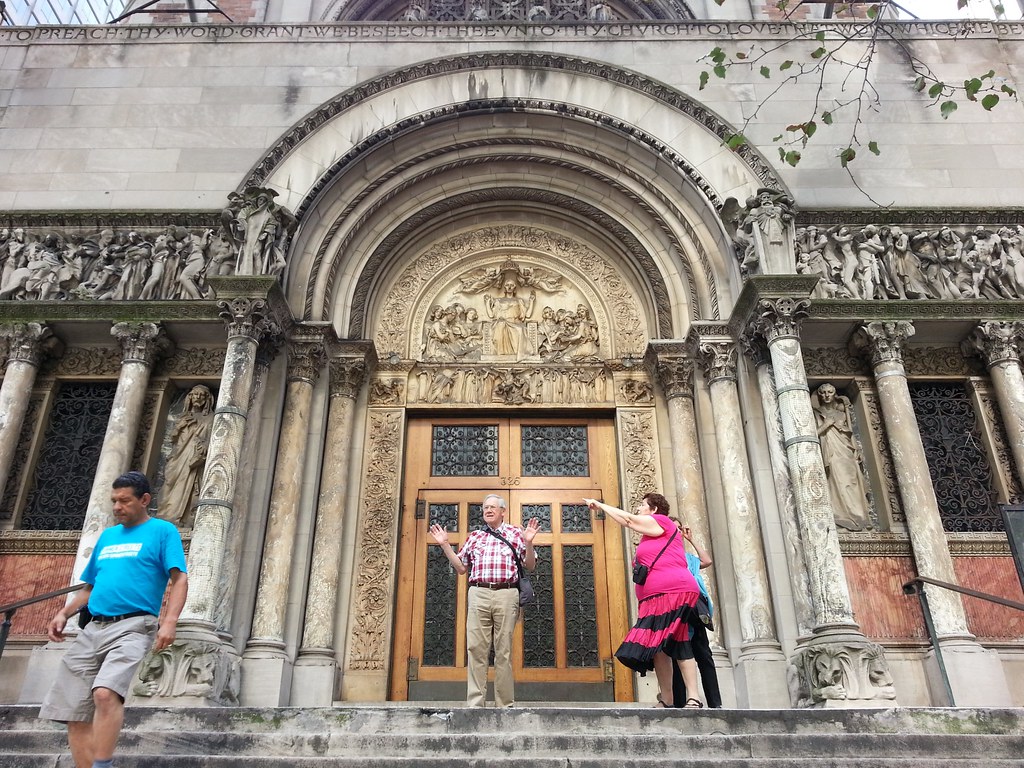
This triple portal at St. Bartholomew's was originally part of a prior incarnation of the church several blocks away.
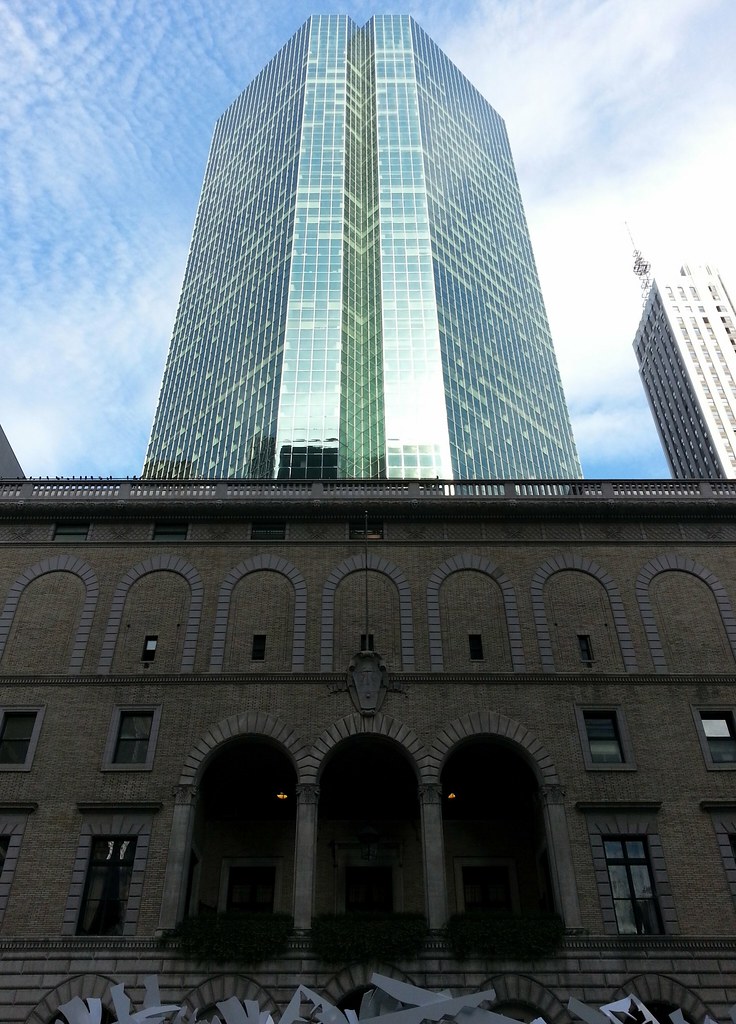
In the foreground: the men-only Racquet and Tennis Club, "home to some of the most arcane sports in the world". Rising behind it: Park Avenue Plaza, whose developers bought the club's air rights for $5 million in the late 1970s after "perhaps the biggest game of real estate 'chicken' ever played in New York." The biggest, sure, but certainly not the most hilarious.
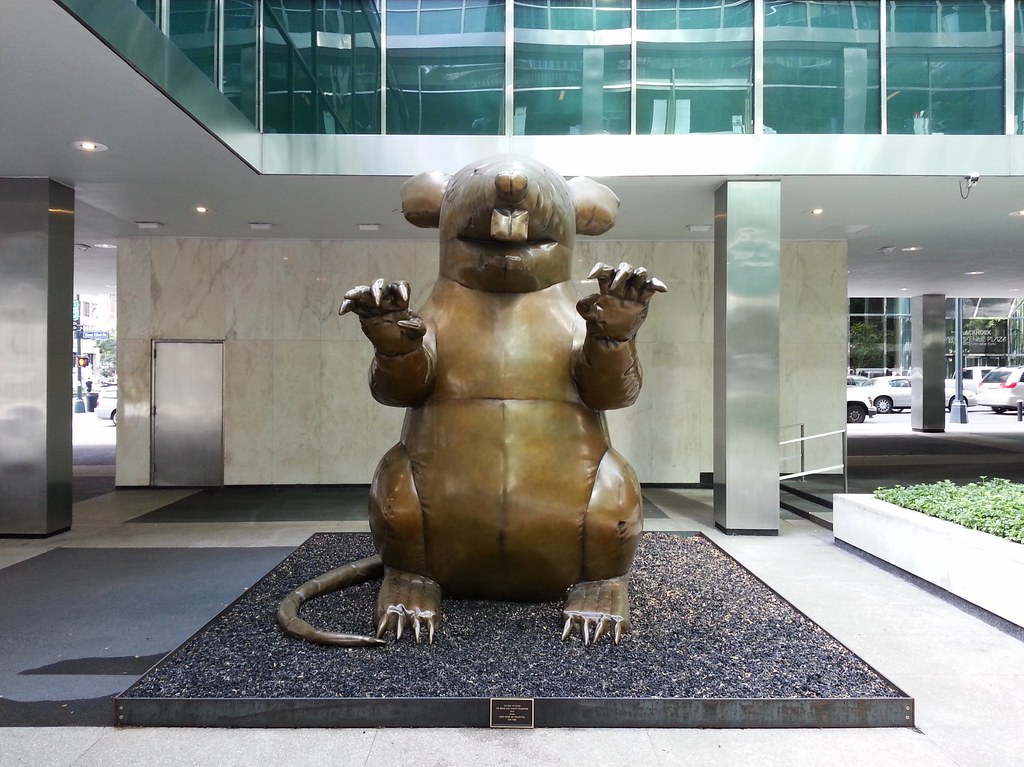
is the name of this bronze replica of Scabby the Rat currently on view at Lever House. The courtyard in which the rat sits is private property, but it's open to the public at all times, with one exception. "In a practice going back to 1953 and a custom that can be traced to Anglo-Saxon England", the courtyard is closed for part of one day each year to provide the owners with a solid legal defense against any potential claims of adverse possession, even though it now "seems inconceivable that Park Avenue passers-by could ever make a claim that they are the actual owners of Lever House’s courtyard."

Ever since I watched Coming to America as a kid, the Waldorf has been synonymous in my mind with luxury. So I was quite surprised when I moved to New York and saw how dirty its facade was. I assumed this must be an old joke around here, this fancy hotel with the gross-looking exterior, but no one ever seemed to know what I was talking about when I brought it up. Even online I could only find one mention, on some weird website, about this "pitiful sight".
Well, as you can see, the building has finally been given a thorough cleaning. Surely, I thought, this would be big enough news to merit at least a passing mention on a blog somewhere. But there's nothing! The whole internet is silent about it.
Until now.
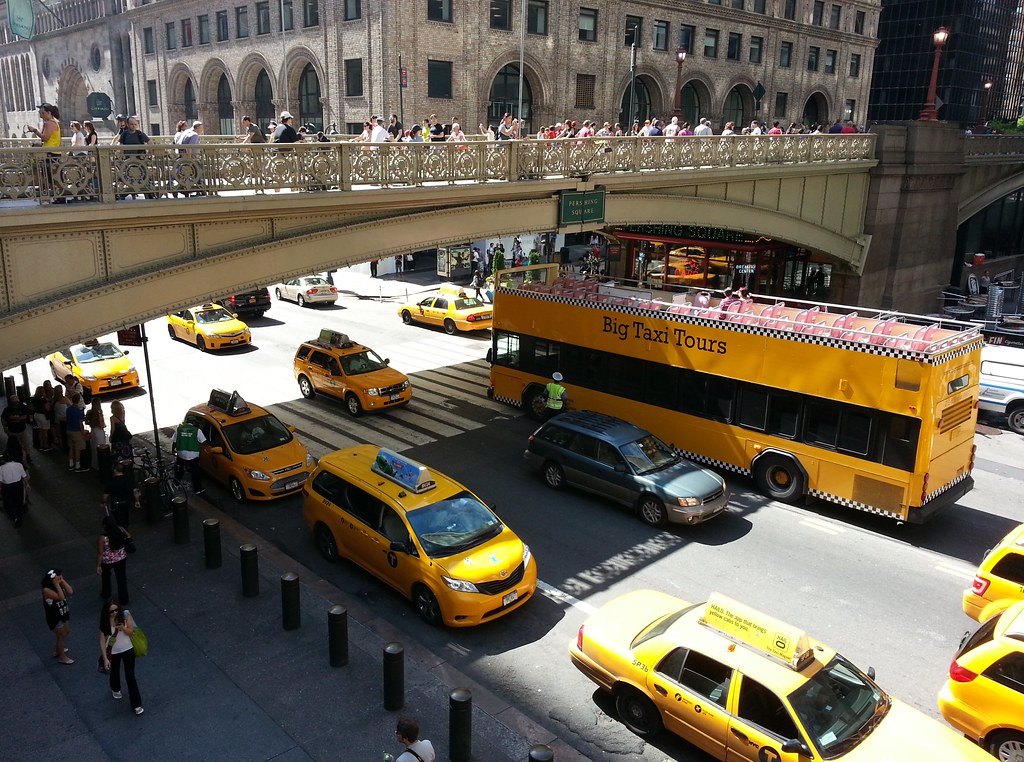
With Summer Streets still in full swing, I'm looking down at the Yellow River of 42nd Street from the Park Avenue Viaduct.
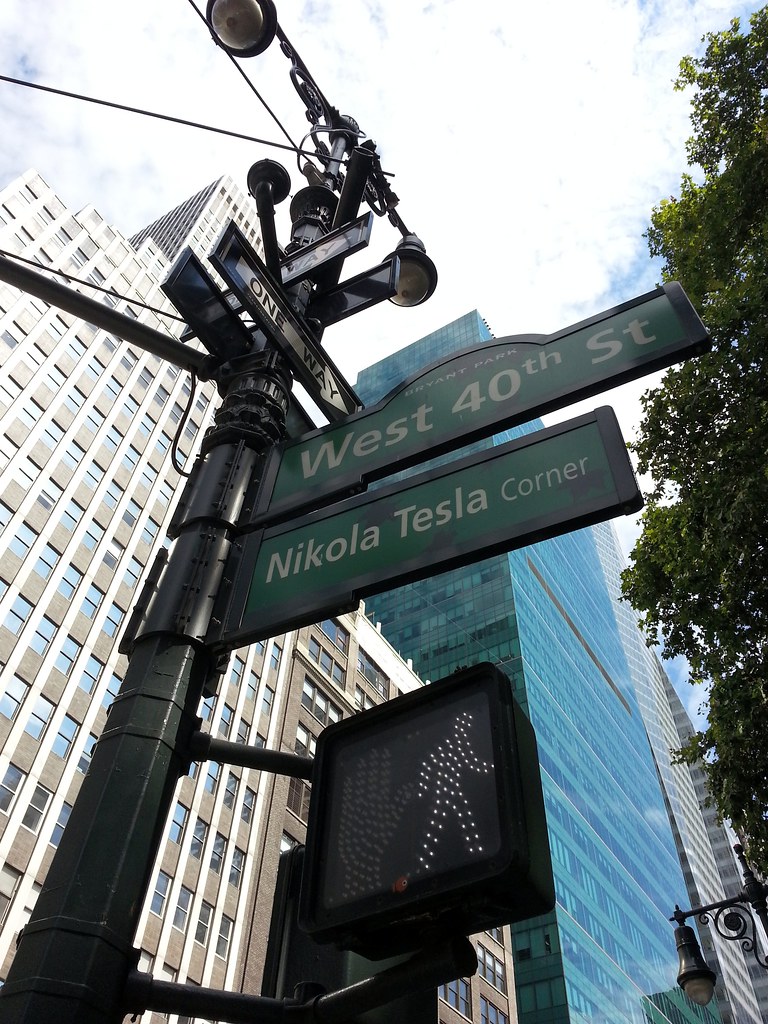
During the last few decades of his life, the visionary inventor, who at one point had a laboratory located down the block at 8 West 40th Street, came here to Bryant Park on a regular basis to feed his beloved pigeons.
In his words:
Sometimes I feel that by not marrying I made too great a sacrifice to my work . . . so I have decided to lavish all the affection of a man no longer young on the feathery tribe. I am satisfied if anything I do will live for posterity. But to care for those homeless, hungry or sick birds is the delight of my life. It is my only means of playing.and:
I have been feeding pigeons, thousands of them for years. But there was one, a beautiful bird, pure white with light grey tips on its wings; that one was different. It was a female. I had only to wish and call her and she would come flying to me.
I loved that pigeon as a man loves a [woman], and she loved me. As long as I had her, there was a purpose to my life.


